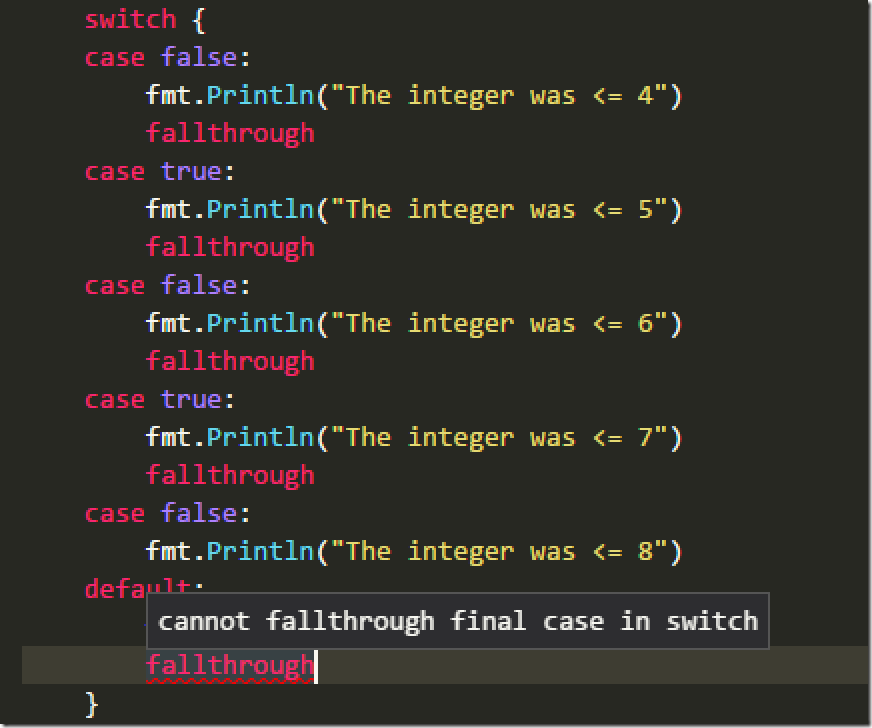fallthrough:Go里面switch默认相当于每个case最后带有break,匹配成功后不会自动向下执行其他case,而是跳出整个switch, 但是可以使用fallthrough强制执行后面的case代码。
示例程序1:
switch {
case false:
fmt.Println("The integer was <= 4")
fallthrough
case true:
fmt.Println("The integer was <= 5")
fallthrough
case false:
fmt.Println("The integer was <= 6")
fallthrough
case true:
fmt.Println("The integer was <= 7")
fallthrough
case false:
fmt.Println("The integer was <= 8")
default:
fmt.Println("default case")
}
输出结果:
The integer was <= 5
The integer was <= 6
The integer was <= 7
The integer was <= 8
问题:是否在switch最后一个分支使用fallthrough???
有错误提示,显示:cannot fallthrough final case in switch
fallthrough不能用在switch的最后一个分支。
示例程序2:
上述示例是true、false常量进行分支判断,看如下变量示例。
s := "abcd"
switch s[1] {
case 'a':
fmt.Println("The integer was <= 4")
fallthrough
case 'b':
fmt.Println("The integer was <= 5")
fallthrough
case 'c':
fmt.Println("The integer was <= 6")
default:
fmt.Println("default case")
}
输出结果如下:
The integer was <= 5
The integer was <= 6
更改为:
s := "abcd"
switch s[3] {
case 'a':
fmt.Println("The integer was <= 4")
fallthrough
case 'b':
fmt.Println("The integer was <= 5")
fallthrough
case 'c':
fmt.Println("The integer was <= 6")
default:
fmt.Println("default case")
}
输出:
default case
总结:
switch分支中使用变量进行判断的时,fallthrough正确的分支开始其作用。
补充:【踩坑】golang的fallthrough大坑
加了fallthrough后,会直接运行【紧跟的后一个】case或default语句,不论条件是否满足都会执行,后面的条件并不会再判断了,?
以上为个人经验,希望能给大家一个参考,也希望大家多多支持自学编程网。如有错误或未考虑完全的地方,望不吝赐教。

- 本文固定链接: https://zxbcw.cn/post/211392/
- 转载请注明:必须在正文中标注并保留原文链接
- QQ群: PHP高手阵营官方总群(344148542)
- QQ群: Yii2.0开发(304864863)

